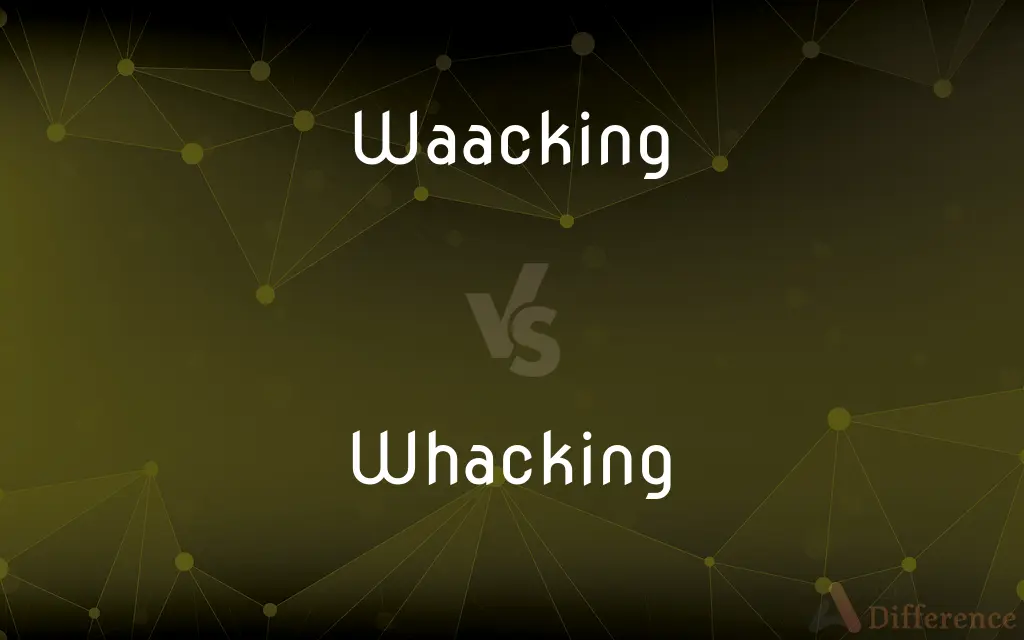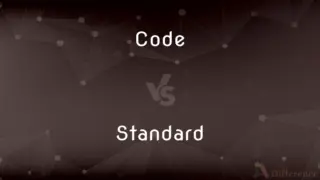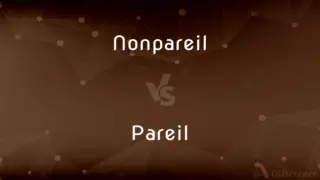Waacking vs. Whacking — What's the Difference?
By Tayyaba Rehman & Urooj Arif — Updated on March 30, 2024
Waacking is a form of dance, while whacking is hitting something hard.

Difference Between Waacking and Whacking
Table of Contents
ADVERTISEMENT
Key Differences
Waacking is a dance style that originated in the LGBT clubs of Los Angeles during the 1970s, characterized by its expressive movements, particularly of the arms and upper body, and dramatic poses. Whacking, on the other hand, refers to the act of striking or hitting something forcefully, often with the intent to cause damage or harm. This difference highlights the contrast between an artistic expression and a physical action.
While waacking is known for its rhythmic and stylistic precision, often performed to disco music, whacking is a general term that doesn't pertain to any specific rhythm or context. Waacking involves precise music interpretation, improvisation, and storytelling through movement, whereas whacking is simply the act of hitting with no underlying artistic or expressive intent.
Waacking is not only a dance but also a form of cultural expression, reflecting the freedom and liberation movements of the 1970s. It serves as a means of communication and self-expression among dancers, allowing them to convey emotions and narratives through their performances. Conversely, whacking is a straightforward action with no cultural or expressive layers, used in various contexts from construction work to casual speech when describing the act of hitting something.
In terms of community and social impact, waacking has a significant role within the dance community, contributing to the diversity of dance cultures and fostering inclusivity, especially among LGBTQ+ communities. Whacking, due to its general nature as an action, does not contribute to community building or cultural expression in a similar way. It is a common term used in everyday language without the social and cultural implications of waacking.
Despite their phonetic similarity, waacking and whacking occupy entirely different spaces in society and language. Waacking represents a creative and expressive art form, a dance style that has evolved and gained international recognition. Whacking, however, remains a simple verb describing the act of hitting, showcasing the diversity of English language usage and the vast difference in meaning that can occur with the change of a single letter.
ADVERTISEMENT
Comparison Chart
Definition
A dance style characterized by expressive arm movements.
The act of striking something forcefully.
Origin
1970s Los Angeles LGBT clubs.
General English usage.
Key Characteristics
Rhythmic precision, expressiveness, cultural expression.
Forceful action, no specific rhythm or expression.
Context
Dance, performance, artistic expression.
Physical action, often implying damage or harm.
Social Impact
Cultural and community building within dance.
None specific to its action.
Compare with Definitions
Waacking
Reflects freedom and liberation movements.
Waacking has roots in the liberation movements of the 1970s.
Whacking
Implies the intent to harm or damage.
He was whacking the bush to trim it down.
Waacking
A dance style with expressive arm movements.
Waacking competitions showcase dancers' creativity and musicality.
Whacking
Often used in casual speech.
He spent the afternoon whacking weeds in the garden.
Waacking
Known for its storytelling through dance.
She used waacking to express the song's emotional depth.
Whacking
Lacks a specific cultural or expressive context.
Whacking the alarm clock, he silenced its ringing.
Waacking
Characterized by dramatic poses and movements.
His waacking routine included a series of dramatic freezes.
Whacking
Striking with force.
Whacking the piñata eventually broke it open.
Waacking
Often performed to disco music.
Waacking to classic disco tunes, she captivated the audience.
Whacking
Can describe vigorous action.
Whacking the tennis ball, she scored the winning point.
Waacking
Waacking is a form of street dance created in the LGBT clubs of Los Angeles during the 1970s disco era. The style is typically done to 70s disco music and is mainly distinguishable by its rotational arm movements, posing and emphasis on expressiveness.
Whacking
Very large; huge.
Waacking
A style of disco dance involving rhythmic footwork and moving one's arms to the beat.
Whacking
Very; extremely.
Whacking
Present participle of whack
Whacking
(informal) Exceptionally large; whopping (often followed by an adjective such as great or big).
Whacking
A beating.
Whacking
Very large; whapping.
Whacking
The act of inflicting corporal punishment with repeated blows
Whacking
(British informal) enormous;
A whacking phone bill
A whacking lie
Whacking
Extremely;
A whacking good story
Common Curiosities
Is whacking always violent?
While whacking implies force, it's not always violent; it can be used in contexts like sports or gardening.
How did waacking originate?
Waacking originated in the LGBT clubs of Los Angeles during the 1970s as a form of expressive dance and cultural statement.
What does whacking mean?
Whacking refers to the act of hitting or striking something forcefully.
Can waacking be learned by beginners?
Yes, waacking can be learned by beginners interested in dance and expression.
What is waacking?
Waacking is a dance style emphasizing expressive arm movements and dramatic poses, often performed to disco music.
Are there competitions for waacking?
Yes, there are dance competitions specifically for waacking, showcasing talent and creativity.
Can whacking be part of a professional activity?
Yes, in contexts like construction or sports, whacking can describe professional actions.
Is whacking a technical term?
In some fields like carpentry or sports, whacking can be used to describe specific actions, but it's generally not a technical term.
Do you need special equipment for waacking?
No special equipment is needed for waacking, making it accessible to many.
What's the difference in pronunciation between waacking and whacking?
The pronunciation is very similar, with the primary difference being context and meaning rather than sound.
What cultural significance does waacking hold?
Waacking holds cultural significance within the LGBTQ+ community and dance culture, symbolizing freedom and self-expression.
Can waacking be a form of exercise?
Yes, waacking is not only expressive but also a physical activity that can serve as a form of exercise.
How does society view waacking?
Society views waacking as a respected dance form and cultural expression, particularly within dance and LGBTQ+ communities.
What skills can whacking develop?
In specific contexts like sports, whacking can develop coordination, strength, and precision.
How do attitudes towards waacking and whacking differ?
Waacking is often celebrated for its artistic and expressive qualities, while attitudes towards whacking depend on context, ranging from practical to negative.
Share Your Discovery

Previous Comparison
Code vs. Standard
Next Comparison
Nonpareil vs. PareilAuthor Spotlight
Written by
Tayyaba RehmanTayyaba Rehman is a distinguished writer, currently serving as a primary contributor to askdifference.com. As a researcher in semantics and etymology, Tayyaba's passion for the complexity of languages and their distinctions has found a perfect home on the platform. Tayyaba delves into the intricacies of language, distinguishing between commonly confused words and phrases, thereby providing clarity for readers worldwide.
Co-written by
Urooj ArifUrooj is a skilled content writer at Ask Difference, known for her exceptional ability to simplify complex topics into engaging and informative content. With a passion for research and a flair for clear, concise writing, she consistently delivers articles that resonate with our diverse audience.
















































